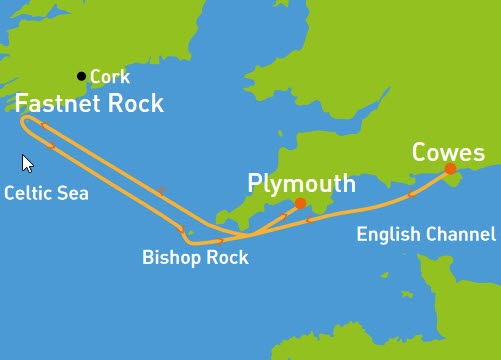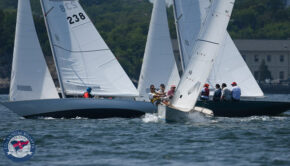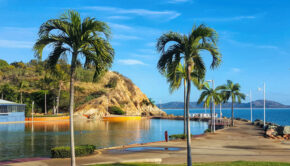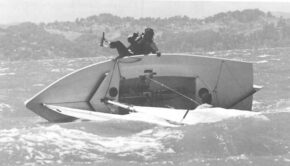Behind the Scenes of High Demand
Published on February 25th, 2019
Held biennially, the 605-mile Rolex Fastnet Race continues to be in high demand. When entries were opened, 180 boats had entered in the first two minutes. After four minutes and 37 seconds, the maximum entry limit of 340 boats was reached, with subsequent requests filtered through to the reserve list.
Ultimately, after the deluge subsided on the opening day for entries, 440 boats in total had signed up. What makes this race so popular? What can others learn from their success? Scuttlebutt editor Craig Leweck checked in with Eddie Warden Owen, CEO of the Royal Ocean Racing Club, for answers:
For starters, any general observations?
As for what people are choosing to pursue competitively, we are seeing the overlap between inshore and offshore racing is reducing. Offshore racing is strengthening whereas inshore racing is weakening.
Is there a priority system within registration or is it ‘first come, first served’?
RORC members have priority by being allowed a week to confirm their entry. For non-members it is a first come first served.
What is it about the Rolex Fastnet Race that makes it so popular?
The Rolex Fastnet Race is a bucket list race, a huge adventure and a rite of passage for budding offshore racers. It serves a community in Northern Europe in which offshore racing is popular, so there is a strong local market that want to add this race to their offshore CV.
The race course is unique in that competitors have to negotiate the Solent’s narrow exit at Hurst Castle (a sight that must be seen and experienced), navigate the tricky tidal waters of the English Channel and the many headlands along the way that can make or break your result.
Then begins the open ocean crossing of the Celtic Sea before rounding that famous rock off southern island and returning to Plymouth via the Scilly Islaes. Fastnet’s reputation as a tough no-compromise race is the reason for its popularity, and just completing the course is a milestone for many.
Could the Fastnet Race be as popular if held every year?
I don’t believe we would get the same numbers if we ran the race every year. There are plenty of interesting regattas and races to do in a non-Fastnet year and the biennial timing concentrates the desire of more people to complete this special challenge.
We timed the quadrennial West to East Transat Race from Newport to Cowes for a Fastnet year (which we jointly organize with the NYYC, Storm Trysail Club and Royal Yacht Squadron) and this has stimulated the record entry we have from American boats.
Is there a connection between limiting participation and the rapid registration?
The cap of 300 boats was instigated because the RORC, together with Offshore Challenges (which became OC Sport), invested in the manufacture of 300 trackers. When these were sold to Yellow Brick Tracking (now YB Tracking), the number of available trackers was increased and this allowed the RORC to increase the number of boats to participate.
Such has been the demand that first the non IRC boats (Class 40, IMOCA, Multihulls etc) were removed from the 300 limit in 2011, then the limit was increased to 340 IRC boats in 2015. You may ask why impose a limit? The limit is to ensure that every IRC boat is able to join the party we have in Plymouth and get a berth in Plymouth Yacht Haven.
Based on the Mount Batten peninsula opposite the city, Plymouth Yacht Haven has done a brilliant job of swallowing up the fleet and packing them in. Class 40, IMOCA, and Multihulls are berthed elsewhere but are able to access the race village via the 24 hour ferry service that operates between Mount Batten and the city center.
Any lessons that can benefit other similar events?
The RORC has done everything possible to make it easy to enter the race. Sailgate, our bespoke on-line entry system (which is also used by the Newport Bermuda race organization) allows competitors and the RORC race management to easily check their qualification status. The RORC has also encouraged the high profile IMOCA, Class 40, and Volvo Ocean Race boats as well as removing the 70-foot multihull limit to encourage the maxi multihulls to enter and race for their own trophies providing valuable additional profile.
Along with our longtime partner Rolex, we have also taken the confusion out of who wins the Rolex Fastnet Race which is open to amateur and professional. There is only one winner of the Fastnet Challenge Cup and that is one of the 340 IRC rated boats. This makes it easy to understand. To win overall, you first need to race the best you can to win your class because the weather has the final say on beating the entire fleet. This is why many keep coming back and why the race has such appeal.










 We’ll keep your information safe.
We’ll keep your information safe.